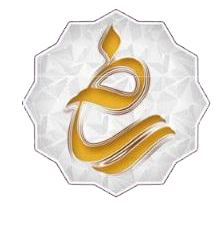بلیط چارتر
تهران به
کیش
2,768
مشهد
2,648
دبی
5,000
شیراز
3,400
استانبول
7,620
اهواز
3,777
نجف
8,267
قشم
2,825
بندرعباس
3,600
ایروان
10,149
تبریز
3,479
بغداد
7,899
مسقط
7,010
عسلویه
4,040
استانبول(سبیها)
8,974
شارجه
4,245
کرمان
3,827
بوشهر
3,200
یزد
2,585
اصفهان
2,982
ارومیه
3,424
چابهار
4,570
آبادان
3,925
کرمانشاه
3,099
زاهدان
4,621
باکو
7,500
رشت
2,461
اردبیل
2,775
تفلیس
14,810
کویت
10,861
کابل
13,243
بیرجند
3,500
ازمیر
9,380
ایلام
3,903
آلانیا
7,799
شانگهای
39,907
دوشنبه
19,490
آنکارا
8,500
گرگان
3,342
لار
2,515
گوانجو
38,840
امیدیه
4,028
ساری
1,606
مسکو(شرمتیوو)
21,061
بانکوک
42,198
اربیل(عراق)
24,943
سليمانيه
20,526
دزفول
4,157
تاشکند
19,860
خرم آباد
3,366
شنژن
36,948
مزارشریف
18,759
دهلی
28,808
سنندج
3,998
پوکت
47,368
سیرجان
4,729
گناباد
3,025
پکن
33,846
باتومی
12,835
بم
5,421
یاسوج
3,740
سبزوار
4,300
شهرکرد
3,381
بجنورد
4,101
رفسنجان
5,887
جیروفت
4,902
لاهور
18,358
بمبئی
19,078
آنتالیا
17,301
اسلام آباد
17,000
ایرانشهر
5,752
ماکو
3,821
طبس
3,577
سراوان
4,455
بندرلنگه
2,577
18,787
زابل
5,466
مراغه
5,119
آلماتی
38,711
لامرد
7,031
جاسک
5,247
گچساران
4,504
کوالالامپور
65,000
ماهشهر
5,670
پارس آباد مغان
5,501
مشهد به
تهران
2,982
نجف
9,577
کیش
4,181
اصفهان
3,139
بغداد
8,886
شیراز
4,111
آبادان
5,755
اهواز
4,709
ساری
3,810
یزد
3,976
تبریز
5,450
رشت
3,800
استانبول(سبیها)
8,575
کرمانشاه
4,185
قشم
4,567
کویت
10,861
بوشهر
3,550
دبی
8,200
بندرعباس
5,450
نوشهر
4,766
ایلام
3,600
ارومیه
3,750
کابل
14,342
استانبول
8,900
زاهدان
3,898
چابهار
4,100
دوشنبه
9,040
شارجه
14,316
همدان
5,387
مسقط
15,500
کراچی
20,093
لاهور
12,000
اراک
6,859
زنجان
5,421
زابل
3,715
کرمان
4,623
کویته
11,753
اردبیل
5,466
سراوان
3,822
بیرجند
1,611
گرگان
4,046
قندهار
7,982
کیش به
اهواز به
اصفهان به
شیراز به
تهران
2,928
کیش
1,988
مشهد
3,315
دبی
5,924
مسقط
7,171
شارجه
6,121
بندرعباس
3,976
ساری
4,320
کویت
10,071
نجف
12,264
تبریز
5,900
اهواز
3,503
عسلویه
4,028
رشت
2,929
قشم
4,046
دوحه
12,215
استانبول
10,900
آبادان
4,869
چابهار
7,063
استانبول(سبیها)
11,866
بندرلنگه
1,858
امیدیه
3,139
کرمانشاه
6,184
زاهدان
4,123
استانبول به
دبی به





